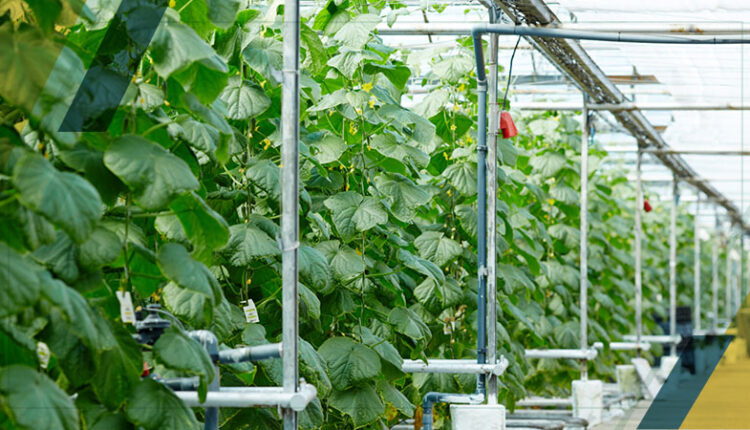We enjoy our favorite fruits and vegetables, but those are available only during specific seasons. What if I say there is farming that breaks free from the constraints of changing seasons, where the availability of fresh produce is no longer dictated by traditional agricultural practices? The vertical farming technique has transcended the boundaries of traditional farming.
So, let’s delve deeper and learn more about this new farming method.
What is Vertical Farming?
Vertical farming is a method of agricultural production where crops are grown in vertically stacked layers, as opposed to traditional horizontal agriculture. This innovative approach allows farmers to produce significantly more food on the same or even less land. By utilizing vertically stacked layers in various structures, such as buildings, warehouses, shipping containers, and greenhouses, we can utilize unusable spaces for farming.
The practice of farming vertically requires meticulous control of artificial temperature, light, water, and humidity to maintain a delicate balance for optimal crop growth. This level of control is essential to prevent the loss of an entire crop, similar to risks that traditional farms encounter during events like droughts or floods.
Soilless Agriculture Techniques Used in Vertical Farming
Vertical farms often incorporate soilless farming techniques to optimize plant growth. Let’s take a look at these methods.
● Vertical hydroponics farming
The vertical hydroponics farming method uses mineral nutrient solutions in a water solvent without using soil. This technique allows for precise control over the plant’s environment, including nutrient levels, pH, and water content, leading to efficient and high-yield crop production.
● Vertical aeroponics farming
Vertical aeroponics farming involves suspending plant roots in the air and spraying them with a nutrient-rich solution. This method allows for maximum oxygenation of the roots, promoting rapid and healthy plant growth.
● Vertical aquaponics farming
Aquaponics farming combines hydroponics with aquaculture (fish farming) in a symbiotic environment. In this system, the waste produced by fish provides nutrients for the plants, which help purify the water for the fish. This creates a closed-loop, sustainable ecosystem that can produce both fish and crops in a highly efficient manner.
These methods enable the cultivation of crops in challenging environments, such as areas where arable land is scarce or unavailable.
Exploring the Primary Benefits of Vertical Farming
Farming in a vertical manner offers various benefits such as:
- It offers year-round crop production, regardless of the season.
- It makes efficient use of space, producing high yields in a smaller area.
- It reduces water usage compared to traditional farming methods.
- It enables access to urban areas, bringing fresh produce closer to consumers.
- It causes minimal environmental impact by utilizing sustainable energy sources and practices.
- It eliminates the need for pesticides, providing a healthier and safer growing environment for crops.
Indoor Vertical Farming: A Revolution in Agriculture
Vertical farming can be successfully implemented in houses through indoor vertical farming techniques. This technique refers to the controlled method of growing crops in a closed environment, reducing land space compared to traditional methods. This farming technique at home can be suitable for various indoor settings, such as closets, corners of the kitchen, or unfinished basements. This efficient use of space allows for the cultivation of a variety of crops in a limited area. These farms often produce chemical-free crops. Indoor vertical farms, as stated by the National Institute of Health, eliminate the need for pesticide use within their facilities by ensuring a clean and insect-free cultivation environment.
Vertical farms can be hydroponic or aeroponic, using artificial grow lights instead of natural sunlight. For instance, Plenty, a company specializing in indoor vertical farming, emphasizes the advantages of this method. It highlights that it allows for the growth of fresh, flavorful, and pesticide-free greens while using a fraction of the land and water compared to conventional farms.
Technological advancements are fueling indoor vertical farming. Companies such as AeroFarms are utilizing the latest breakthroughs in indoor vertical farming, artificial intelligence, and plant biology to grow a wide array of products. This approach delivers superior flavor, better quality, and improved nutrition with sophisticated levels of traceability and food safety.
Wrapping Up
Vertical farming is considered a highly efficient and sustainable way of producing food, as it allows for a significant increase in yield for a given land area. It offers a sustainable solution to the challenges of traditional agriculture, providing year-round crop production, efficient space utilization, and reduced water usage. It also enables urban accessibility and has the potential to minimize environmental impact through the elimination of pesticides and sustainable energy practices. This method holds promise for meeting the growing demands for food production, especially in the face of a rapidly increasing global population and the challenges associated with urbanization.


